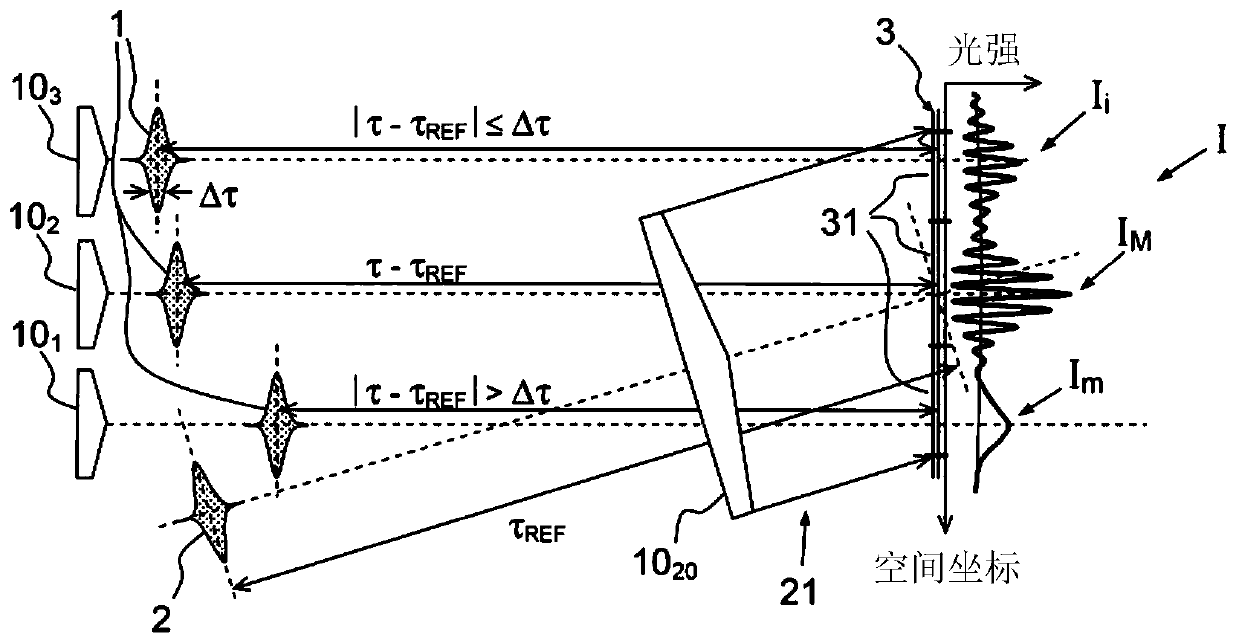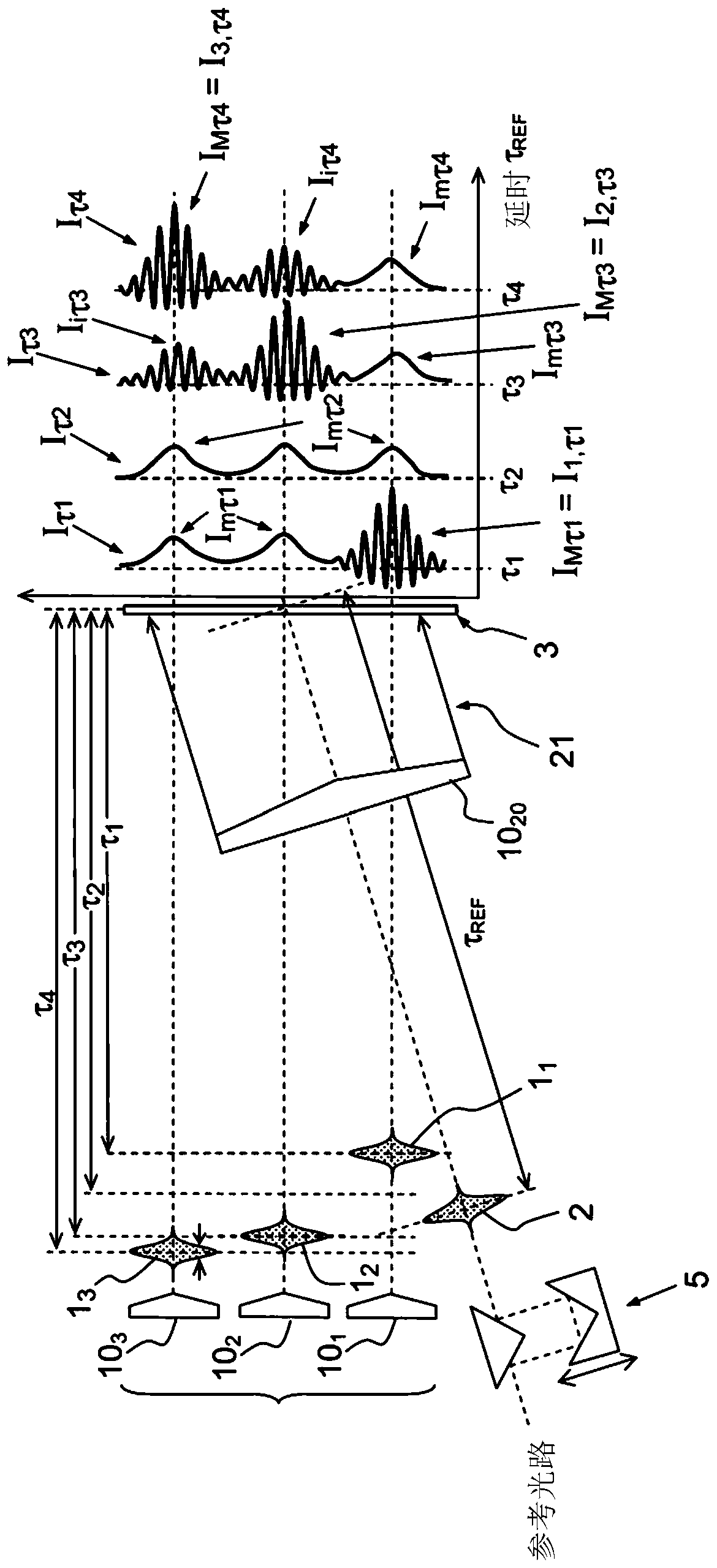Method for measuring relative time delay between optical transmission channels operating in pulsed mode
A technology of transmission direction, pulsed light source, applied in the direction of measuring optics, devices for measuring time intervals, measuring devices, etc.
- Summary
- Abstract
- Description
- Claims
- Application Information
AI Technical Summary
Problems solved by technology
Method used
Image
Examples
Embodiment Construction
[0057] The solution presented takes as its basis the structure of co-phase measurements by interferometry techniques described in "Collective coherent phase combining of 64 fibers" published by J. Bourderionnet et al. in Opt Express. 19. In this configuration, the optical phase shift between transmission channels is obtained by analyzing the network of interference fringes between each beam and a common reference beam. The fringes are collectively recorded on the camera so that the entire phase shift is recorded on one image. In the pulse domain, asynchronous pulses, ie pulses that are not simultaneously present on the plane of the camera's sensor, will not interfere. Then measurement is impossible.
[0058] refer to figure 1 , an exemplary embodiment of a common measuring method is described. Assume that pulse 1 to be characterized is collimated and the pulses travel in the same direction; 3 pulses to be characterized are shown in the figure. The reference pulse 2 expands...
PUM
 Login to View More
Login to View More Abstract
Description
Claims
Application Information
 Login to View More
Login to View More - R&D
- Intellectual Property
- Life Sciences
- Materials
- Tech Scout
- Unparalleled Data Quality
- Higher Quality Content
- 60% Fewer Hallucinations
Browse by: Latest US Patents, China's latest patents, Technical Efficacy Thesaurus, Application Domain, Technology Topic, Popular Technical Reports.
© 2025 PatSnap. All rights reserved.Legal|Privacy policy|Modern Slavery Act Transparency Statement|Sitemap|About US| Contact US: help@patsnap.com



